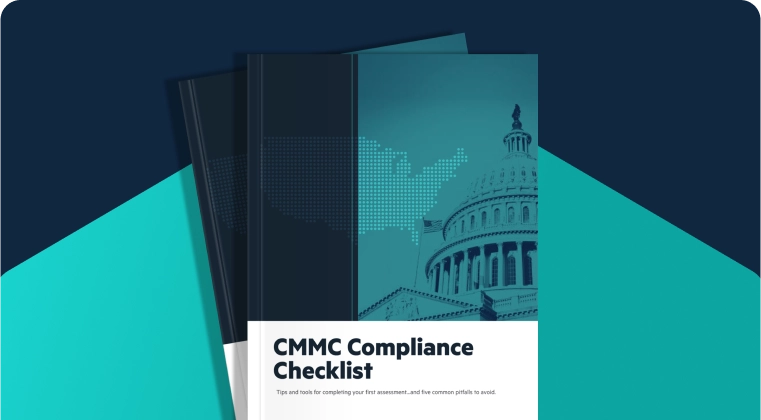CMMC Compliance Deadline 2025: Critical Timeline for DoD Contractors
The defense industry has entered a make-or-break year in 2025. The CMMC (Cybersecurity Maturity Model Certification) compliance deadline is the barrier between keeping contracts and being shut out. The rule went live in December 2024, and enforcement begins just 60 days after the acquisition rule is published. That gives contractors a short runway to prove they can protect sensitive data.
Yet, reports show more than 16% of contractors report little to no readiness for CMMC. That gap is a warning that half the industry could lose eligibility overnight. This guide lays out the timeline, levels, and steps you need to take now so you don’t become another statistic when deadlines arrive.
Let’s jump in and learn:
- TL;DR: CMMC Compliance Deadline 2025 for DoD Contractors
- CMMC Timeline and Key Compliance Deadlines
- Preparing for DOD CMMC Compliance Deadlines
- Which Companies Require CMMC Compliance?
- Immediate Actions to Meet CMMC Certification Deadlines
- CMMC Certification Timeline: Plans of Action & Milestones (POA&M)
- Global Impacts and Opportunities from DOD CMMC Timeline
- Conclusion
- Frequently Asked Questions:
TL;DR: CMMC Compliance Deadline 2025 for DoD Contractors
- The CMMC compliance deadline is fast approaching for all DoD contractors handling Controlled Unclassified Information (CUI).
- CMMC implementation is happening in phases, with requirements gradually becoming mandatory. So if you’re compliant with NIST SP 800-171, you're already on the right track for CMMC Level 2.
- Don't wait until the last minute. Solutions like Egnyte's Content Cloud can streamline your path to CMMC compliance.
CMMC Timeline and Key Compliance Deadlines
The CMMC framework is designed to protect sensitive unclassified information (CUI) within the defense industrial base (DIB). While the concept has been around for a few years, 2025 marks a significant point in its full implementation.
Initially, there was a pilot phase, but the DoD CMMC timeline indicates that CMMC will be a contractual requirement for an increasing number of solicitations by late 2024 and fully enforced by October 1, 2025. This means that by fiscal year 2025, a CMMC certification will be a non-negotiable requirement for many new DoD contracts.
Preparing for DOD CMMC Compliance Deadlines
Deadlines land inside solicitations. That means your CMMC compliance deadline will vary by contract, but the window shortens as phases advance. Treat the next quarter as your start line and begin remediation so you can attest or certify on time.
The DoD CMMC timeline and deadline give limited breathing room once the DFARS rule publishes. Consider these initial stages:
- Identify where your CUI resides and who has access to it.
- Conduct an internal assessment against CMMC requirements, often starting with NIST SP 800-171.
- Book a CMCC assessment slot early.
- For Level 2, plan for a C3PAO certification; for Level 1, plan annual self-assessments plus affirmation in SPRS.
- Decide on CUI hosting (enclave vs. enterprise) and MFA/SSO coverage.
- Track costs and timelines in a living POA&M.
Which Companies Require CMMC Compliance?
This is a common question, and the answer is that any company that wishes to bid on or work on a DoD contract that involves CUI will eventually require CMMC compliance. This includes both prime contractors and subcontractors at all tiers.
The level of CMMC required will depend on the sensitivity of the information handled. For most DIB companies, CMMC Level 2 will be the target, as it aligns directly with NIST SP 800-171.
Immediate Actions to Meet CMMC Certification Deadlines
Given the impending CMMC certification deadline, immediate action is crucial.
- Assign a responsible individual or team to spearhead your CMMC efforts.
- CMMC requires financial investment in tools, training, and potentially third-party services for your CMMC compliance assessment.
- Consider consulting with cybersecurity experts who specialize in CMMC to guide your process.
- Utilize platforms that can assist with content governance, access control, and audit logging.
CMMC Certification Timeline: Plans of Action & Milestones (POA&M)
While the goal is to achieve full compliance before the CMMC certification deadline, the reality is that some organizations may have outstanding items. This is where a POA&M document details a plan for addressing any deficiencies identified during an assessment.
The DoD has indicated that a limited number of POA&Ms might be allowed for CMMC, specifically for CMMC Level 2. However, these will likely be for minor deficiencies that pose a low risk, and they will have strict 180-day timelines for remediation.
The ideal scenario is to have zero POA&Ms, but understanding their role in the CMMC certification timeline is important. It's a temporary measure, not a substitute for complete compliance.
Global Impacts and Opportunities from DOD CMMC Timeline
The DoD CMMC timeline doesn't just impact companies within the United States. Many international companies that are part of the DoD supply chain will also need to achieve CMMC certification. By enhancing your cybersecurity posture, you not only meet a contractual obligation but also:
- Improve overall security: Protect your own intellectual property and sensitive data.
- Gain a competitive advantage: Companies with CMMC certification will be preferred partners for DoD contracts.
- Build trust: Demonstrate a commitment to security, which can lead to new business opportunities beyond the DoD.
Conclusion
By mid-2025, over 58% of DoD contractors still remain unprepared for CMMC, with more than half feeling only slightly or moderately prepared. For many small businesses and defense contractors, this is a wake-up call that if you don’t start now, you will fall behind.
Egnyte cuts through the noise with secure, governed cloud file-sharing, automated policy enforcement, and ready-made audit evidence. It helps you find, govern, and report on CUI securely, simplifies evidence collection, supports MFA and gives guided workflows for reviews.
Frequently Asked Questions:
Q. Are there different CMMC compliance deadlines for prime contractors and subcontractors?
No, both primes and subs see the clause in their awards. Your CMMC compliance deadline depends on your contract and the level of your contract. Plan independently.
Q. How does the phased CMMC implementation timeline affect compliance deadlines?
Phase 1 starts 60 days after 48 CFR publishes with self-assessments. Later phases add third-party certification and some Level 3 over a three-year ramp. Deadlines tighten as phases advance.
Q. What is the difference between the CMMC Final Rule effective date and the compliance deadline?
The 32 CFR rule’s effective date (Dec 16, 2024) made the program active. Your enforceable deadline appears when the DFARS clause shows in a solicitation or award after the 48 CFR rule is final. That’s your CMMC certification deadline.
Q. What happens if a contractor misses the CMMC compliance deadline?
No current certification or required self-assessment in SPRS means you’re ineligible for new awards or task orders once the clauses apply.
Q. How does Egnyte help organizations achieve and maintain CMMC compliance?
Use Egnyte to find and govern CUI, automate policy enforcement, and streamline evidence for audits. Start with a guided CMMC assessment, then a scoped CMMC compliance assessment. Keep artifacts centralized, permissions tight, and monitoring continuous, so the next CMMC compliance deadline is just another date you’re ready for.
Additional Resources

Get ready for CMMC 2.0: Your Checklist Inside
Use this comprehensive checklist to map out key steps — from gap analysis to technical scope and ...

Get Ready for CMMC Compliance with Egnyte
Tap into community insights, downloadable guides, and tailored CMMC tools to streamline your compliance journey — from ...

CMMC Final Rule: What You Must Know
Watch this on-demand webinar to understand the newly published CMMC 2.0 Final Rule — get clear on what's ...